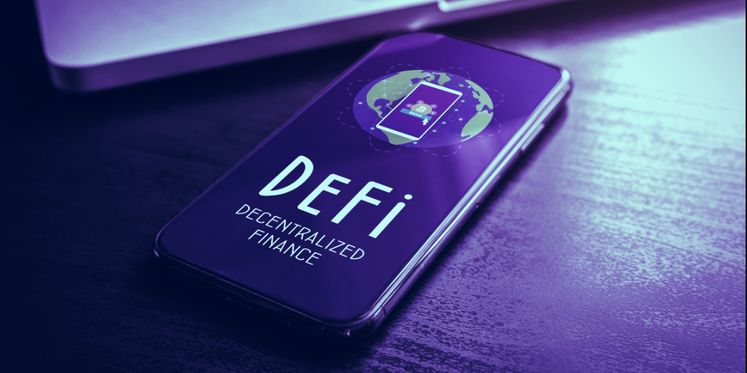The birth of DeFi is the inevitable development of digital currency
As long as the country exists, the super-sovereign currency is a utopia. But the unrealistic super-sovereign currency does not mean that Bitcoin does not have the value and rationality as a special virtual asset. To measure the price (or value) of an asset, in addition to availability, collectability (or scarcity) is also a very important factor. For the former, it is manifested in the versatility of currency. For example, RMB can be used to buy necessities such as rice, noodles, oil, etc.; for the latter, it is reflected in the understanding of people, such as Picasso’s paintings, and on the one hand, the social elite In his eyes, it is priceless, but on the other hand, it looks like graffiti in the eyes of young children.
Although the measurement of Bitcoin (referring to Bitcoin, Ethereum, and stablecoins such as USDT and USDC) in the early stage has an availability factor, the result of practical development is mainly attributable to collectability, and the support point of its value lies in people’s belief. Bitcoin's lack of real-world value anchored by the state endorsed it, making it never possible to have the versatility similar to legal currency, but this does not prevent Bitcoin as an option for some people to make asset allocation.

In addition, the premise that Bitcoin must meet as an asset is to be able to bring benefits. This can of course be achieved from the continuous increase in the price of Bitcoin itself, but this kind of roller coaster-like price fluctuations are unbearable for any serious investor, especially institutional investors. Once upon a time, people in the currency circle hoped that institutional investors would enter the market, but they did not know that institutional investors have very strict systems and methods for risk control. When the price of Bitcoin drops rapidly, they will never "cover" their hands like retail investors.
Fluctuation is not equal to appreciation, and speculation is not equal to investment. It is difficult to meet the long-term and stable value-added conditions of its assets at this stage, and it is not conducive to the stability of its long-term price. Based on the perspective of steady development, the future of Bitcoin depends on people's attitude towards it from "speculation" to investment. The Crypto Lending category in the DeFi project provides a possibility for Bitcoin to obtain asset returns.
DeFi (Before the word DeFi was coined, applications based on smart contracts were called DApps, or Distributed App ). Today, stablecoins are an important part of the development. In the eyes of traditional financial people, a stable currency is nothing more than a Currency SWAP Exchange, which links a certain virtual currency to a certain legal currency. For stablecoin operators, it is necessary to ensure sustainable and high-level liquidity management, which is of course a difficult task; not to mention, the 1997 Asian financial crisis is a counterexample.

But for currency holders, it undoubtedly opened a passage between the virtual world and the ideal world for them. Compared with direct trading, the exchange of stable currencies is undoubtedly more attractive. The initial stablecoins were all linked to a certain legal currency, such as USD. Later, there appeared to be "senior virtual currencies" such as Bitcoin and Ethereurm. Furthermore, the exchange was upgraded to lending, that is, other virtual currencies, such as those with more asset circulation value like Bitcoin, are used as collateral to borrow, such as those with a more stable relationship with legal currency. During this period, all borrowing, repayment, and liquidation processes are managed and executed through smart contracts.
Maker running on Ethereum is the first such application to be widely used. Furthermore, when the roles of deposits and loans are separated, Bitcoin holders can deposit their own assets on the platform to earn interest, such as AAVE or Compound. In this way, Bitcoin can also bring income as the basic asset for generating credit.
The future development of the blockchain, if it only stays at the evangelistic level, is almost the same as the MLM organization. In essence, the digital world cannot be separated from the real world, on the contrary, it is only a mapping of the real world. Replacing the sovereign currency issued by the state with a privately issued digital currency breaks the centralized rules but cannot be replaced by decentralized rules, which will inevitably run counter to the public interest of society.

In terms of at least theoretical possibilities, the technical-institutional arrangement based on the blockchain can indeed solve some of the fundamental flaws in the current financial system. On the one hand, licensed commercial banks and other financial institutions appear as a neutral and credible role, playing a role in delivering government public products, and have certain public welfare attributes. On the other hand, the corporate attributes of financial institutions are destined to actually serve a small number of people (such as shareholders), and it is its nature to pursue excess profits. Although the tension between the two can be restrained from the perspective of supervision or even regulation, it is inevitable.
From the perspective of avoiding the inherent conflicts of traditional indirect financial social-economic duality tension, DeFi, as a pioneer of open finance, attempts to circumvent the participation of people's subjective behavior through technical means such as blockchain and smart contracts, which can be regarded as at least an improvement in path, concept, and method, but this does not mean that open finance or the future financial model must be separated from supervision. On the contrary, the future also needs to be subordinate to reality and grow on the basis of reality. The future financial paradigm needs to be carried out under the future regulatory framework, and the future regulatory framework also needs to adapt to the future financial operation paradigm, relying more on technology, and reducing the participation of human subjective behavior.

DeFi development needs to embrace regulation
Speaking of DeFi’s landing mode, the recent "main role" is naturally the so-called flash loan. The latter has not only flourished in the field of digital lending, but also related to most of the attacks encountered by DeFi projects in the past year.
The use cases of flash loans mainly include: wash trading, collateral swapping, and flash minting. If we say that one of the reasons for the birth of Bitcoin more than ten years ago was a protest and rebellion against the development of financial derivatives; the flash loan more than ten years later made the financial design more complicated and flashy, based on the results of this protest and rebellion, which is an irony.
Wash trading, also known as unwinding, usually refers to investors buying and selling the same stock at the same time, deliberately increasing stock volatility, or brushing the trading volume, creating an illusion. The only function of flash minting is to instantly change the supply of a certain coin in order to deceive the oracle machine. Etymologically, the oracle comes from its English word “oracle”, its original meaning God’s manifestation, which is the place where the ancient Greeks asked for God’s meaning. In the computer field, an oracle refers to a Turing machine connected to an oracle to obtain the answer to a specific form of the question "Is x in A?” In other words, an oracle is an abstract computer, used to study deterministic problems.

In the DeFi world today, decentralized oracles actually refer to the provision of information services for the operation of smart contracts, the most important of which is market quotation services. This is because smart contracts are confined to their own blockchain, lacking a bridge to communicate with the outside world; the role of the oracle is to integrate external information and provide it to the smart contract in a timely manner, so that it can proceed automatically operate according to market changes. For example, in the aforementioned Maker, if the price of Ethereum is lower than a certain threshold, that is, when the contract margin is insufficient, the smart contract can automatically perform liquidation.
In the short term, due to the existence of flash loans, that is, to borrow certain assets (digital currency) without collateral, manipulating price oracles has become a costless thing, and this type of attack is not due to software vulnerabilities, but the "legal" arbitrage of rules. Based on the current DeFi ecosystem, this situation will exist for a long time. In the long run, the first element of the financial industry is trust. Once the public trust is lost, DeFi will fall into a situation where it will never recover.

In view of the possible short-sighted tendency of DeFi, there are many systematic technical improvement measures in theory and practice, such as the Distributed Exchange (or DEX) that adopts the "point-to-pool trading mode" to reject transaction requests from flash loans. Another example is that DEX can specify in the trading rules that the maximum slippage after the transaction does not exceed 100%. An additional example is whether DEX can set up a fuse mechanism, and so on. However, DeFi appears in an unorganized ecological form, and relying solely on self-discipline and market competition means that there is only one end of "enhancement" (more chaotic). The introduction of external forces, that is, the mandatory control of certain behaviors through supervision, is not only a reality that DeFi must face, but also a necessity for its sustainable development.
More importantly, the current investment income of all DeFi projects relies on the issuance of their own project currency. No matter how the expressions are made, the logic is to use technology to challenge public interests and national authority from the private domain, which is the fundamental issue that shakes the foundation of the legitimate development of DeFi. If DeFi has a future, this deadlock must be solved. In fact, project currency is not the core of DeFi, and the business model is the lifeblood of DeFi. On the premise of solving the latter, the digital fiat currency issued by central banks of various countries is a perfect substitute for project currency.

DeFi and digital legal currency achieve each other
The essence of finance is to serve the people's livelihood, help the development of the (physical) economy, and create wealth. Looking back at history, because it is related to the national economy and people's livelihood, the financial industry has been under strong supervision most of the time, except for a few liberalization periods. Before the birth of the Internet, financial institutions acted as capital intermediaries, playing the dual role of information and trust transmission. Accordingly, the supervision also adopted the mode of subject supervision by means of license issuance.
In the past few decades, on the one hand, the popularization of Internet technology has gradually surpassed the barriers of information asymmetry. On the other hand, financial institutions have become increasingly concentrated under capital operation and market competition, resulting in "big but not falling." In addition, financial contracts are becoming more and more complex, and the distance from the general public and the real economy is getting farther and farther. The development of these two aspects has made the existing balance suffer an unprecedented impact after the 2008 financial crisis. After this crisis, traditional financial institutions have lost the trust of the public. From Lending Club (P2P), crowdfunding, Bitcoin, to DeFi, various forms of "financial autonomy" have always existed as a kind of business practice and social thought, even if they have a strong utopian color.

It needs to be pointed out that the first aspect of financial services is security, and the second aspect is profit. For DeFi, how to achieve contract security is a complex system adaptation problem.
First of all, the quality of software code has always been a pain point in the software industry. The DeFi protocol entrusts the entire life cycle of the business to the code, so any loopholes may cause immeasurable losses.
Secondly, the bond is a conventional measure in the financial field. Even if smart contracts are introduced, the security of DeFi must consider the robustness of the agreement, so there is no reason to open up its business.
Once again, no matter how careful you are, bugs are always a lingering shadow in the software. Outside the code, the problems caused by the code must find a solution.
Finally, although it is not a causal relationship, DeFi’s objective “law-breaking” nature is actually the total source of its disorderly and chaotic development. It allows DeFi to completely break away from the shadow of project currency and use digital legal currency as a value measurement, and many of the current chaos will be self-defeating.

Therefore, before talking about replacing the traditional financial system, the first thing DeFi has to do is to embrace supervision and completely abandon the obsession of issuing currency through the private sector. It is also only under the regulatory framework that disorder becomes orderly, and it is possible to find a way to rebirth from DeFi before it is completely "played badly". This may slow down the development of DeFi in the short term, but it is a necessary process that must be gone through for its growth. Of course, for regulators, early, objective, and comprehensive recognition of the potential hidden in DeFi, and building a legal and sustainable regulatory framework for them will not only help control systemic financial risks, but also help the truly profound digital transformation of the financial system.
One is to effectively undertake the beneficial results of digital currency through digital legal currency and regulatory mechanism innovation. Although the early world currency utopian ideals represented by Bitcoin and others have been gradually abandoned, and currency issuance from countries has proved to be just theoretically self-consistent, this practice and trend of thought contain innovative factors such as distributed systems, shared ledgers, and smart contracts. If they can be incorporated into the formal financial system to eliminate the waste and preserve the essence, and make progress in an orderly manner, it will undoubtedly be a win-win development for all parties.

Second, the existing financial system has strong characteristics of the industrial age, and its core is to establish a service system based on institutional credit through the issuance of licenses. After hundreds of years of development, this system has indeed played a very active role for high-value groups, but it has also brought about many deep-rooted and even external problems, such as "big but not falling", "financial discrimination", and so on. From the perspective of social experiments, the practice of DeFi may contribute to a new paradigm for the development of digital financial inclusion.
Third, the development of Internet technology has certainly caused a great impact on the financial system. From Internet finance, to financial technology, and then to digital finance, although the names are dazzling, the essence has not yet touched the core of the digital transformation. Digital finance is not only the transformation of business processes, but also the reconstruction of business models. Relying on the self-generated power of financial institutions, it is difficult to take a substantial digital transformation. Relying on the power of Internet companies is nothing more than putting a new label on top of the old bottle. On the contrary, DeFi’s anti-elitism and its decentralized technology system carry the genes of true digital finance, which is expected to bring a profound impact on the financial system that keeps pace with the times.







